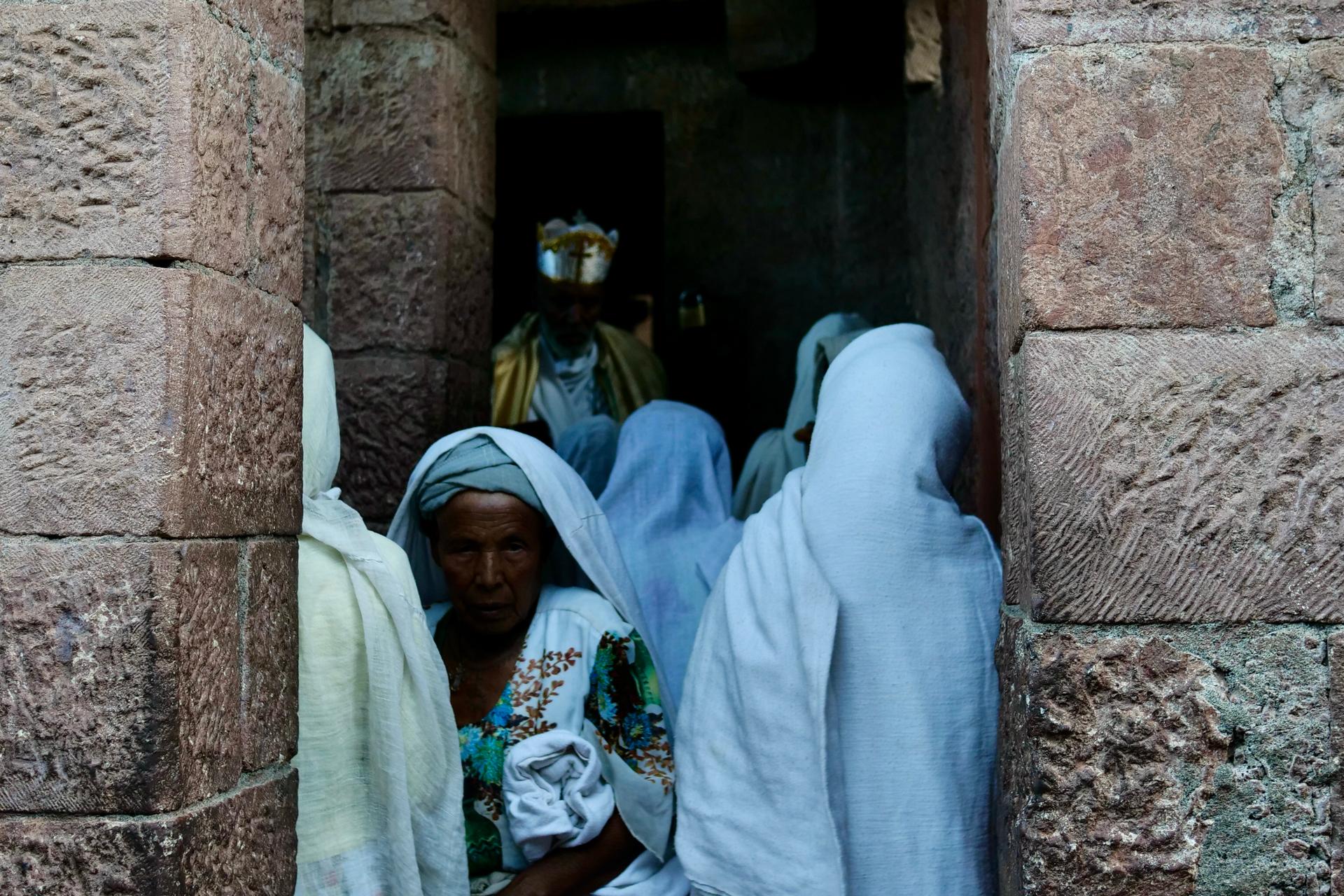Before sunrise, dozens of residents of the holy city of Lalibela, in northern Ethiopia, have come to pray in the large, rock-hewn churches dating back to the 13th century.
Wax candles flicker softly, as priests chanted in the ancient Ge’ez language, still in use with the Ethiopian Orthodox Church.

As conflict between Ethiopia’s federal government and the Tigray People’s Liberation Front expanded over the past year, Lalibela has gotten caught in the middle.
“We pray about the peace not only in Ethiopia but for all of the world. … We are praying about the war, we are praying about the peace.”
“We pray about the peace not only in Ethiopia but for all of the world,” deacon Desew Weday said. “We are praying about the war, we are praying about the peace.”
Related: Despite lull in fighting, ethnic militias in Amhara continue to mobilize
Lalibela is considered a strategic location in the Amhara region, which neighbors Tigray to the south.
Last year, control over the town went back and forth between the warring parties until federal forces retook it in December.
When fighting became intense in the surrounding area, Weday said he and others took refuge in the complex of 11 churches cut out of rust-colored granite.

“They tried to hide themselves in the tunnels, they tried to hide themselves in the church. Because we don’t have any options,” Weday said.
They would pray up to 12 hours a day for months.
Related: After months of fighting, Ethiopia’s Amhara region tries to recover from war
Many locals said they felt abandoned by government officials who fled the city when Tigrayan forces approached.
“The local government left the city, but the religious father stayed here,” local tour guide Beyene Eshete said, referring to priest Tsege Selassie Mezgebu, the administrator of the Lalibela monastery.
“When I heard Tigrayan rebels were approaching the city, I was in the capital Addis Ababa. … So I rushed back to Lalibela.”
“When I heard Tigrayan rebels were approaching the city, I was in the capital Addis Ababa,” Father Mezgebu said. “So, I rushed back to Lalibela.”
For months, church leaders played a critical role in keeping Lalibela safe — it’s also a UNESCO world heritage site.

They negotiated with Tigrayan fighters to keep weapons away from the churches and stepped in to mediate when militiamen started looting.
Tigray forces managed to destroy government offices and other offices, but Lalibela’s ancient churches were left relatively unscathed.
“Damage would be worse and worse if the religious father was not here,” Eshete said.
Fighting has stopped for the moment in the Amhara region, but continues in neighboring Tigray and Afar regions.
Related: Fighting continues in Ethiopia amid UN call for human rights probe
Father Mezgebu said religious leaders have a role to play.
“We must continue to be mediators, like elders,” he said.

However, due to the conflict, he noted that he hadn’t been in touch with his counterparts in Tigray, considered the historical seat of the entire Ethiopian Orthodox Church.
While the fighting has stopped in Lalibela, the impact of the conflict lingers.
To date, there’s no electricity or running water. A heavy military presence of federal soldiers persists.
For 14-year-old student Alador Yibekal, that’s reassuring.
“We feel safe now,” Yibekal said while standing outside his school, where officials set up a distribution site for water. “Because the soldiers are here.”
Roda Sisay, the principal, said many students have yet to return to school — which only just reopened.
“Almost 350 students [do] not come. Because of the economical impact and many of the children there [were] displaced and many, many students also afraid.”
“Almost 350 students [do] not come. Because of the economical impact and many of the children there [were] displaced and many, many students also afraid.”

For six months, Sisay said, the school was used as a military camp by Tigrayan rebels.
Even now, defunct military vehicles are parked in front of the school. In the back, destroyed playground structures.
Pages of books and school papers still litter the ground, having been used to make fires.
It’s up to the teachers to explain the war to their students.
“We say to the people of Tigray and the people of Amhara and the people of Ethiopia, is the same. But this problem [is a] political issue,” Sisay said.

Firew Ayele contributed to this report.
Our coverage reaches millions each week, but only a small fraction of listeners contribute to sustain our program. We still need 224 more people to donate $100 or $10/monthly to unlock our $67,000 match. Will you help us get there today?
